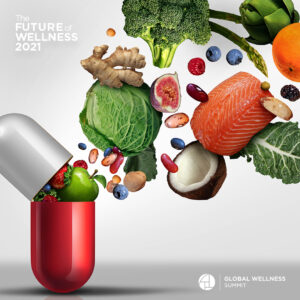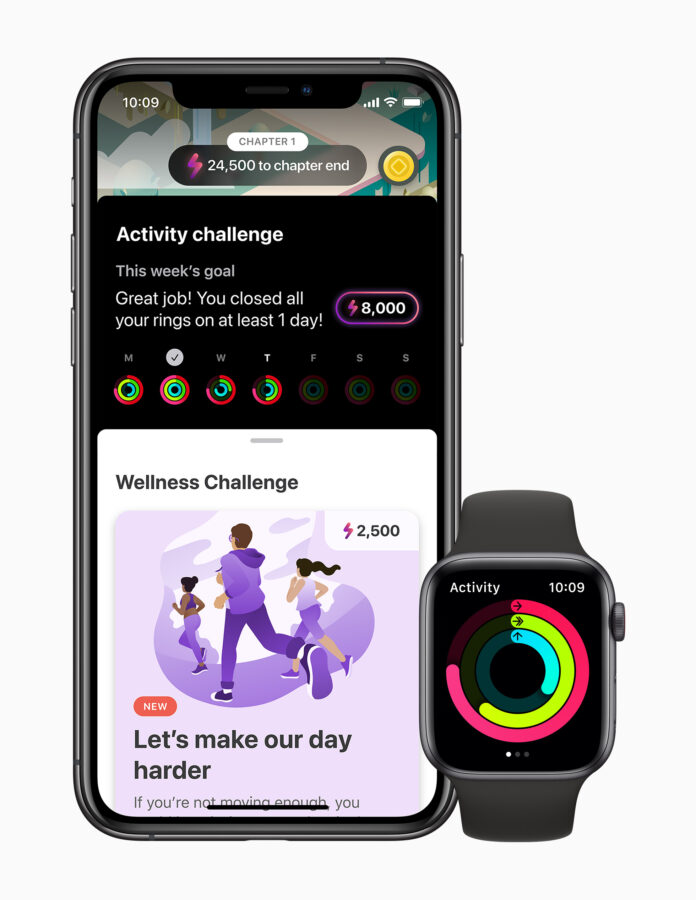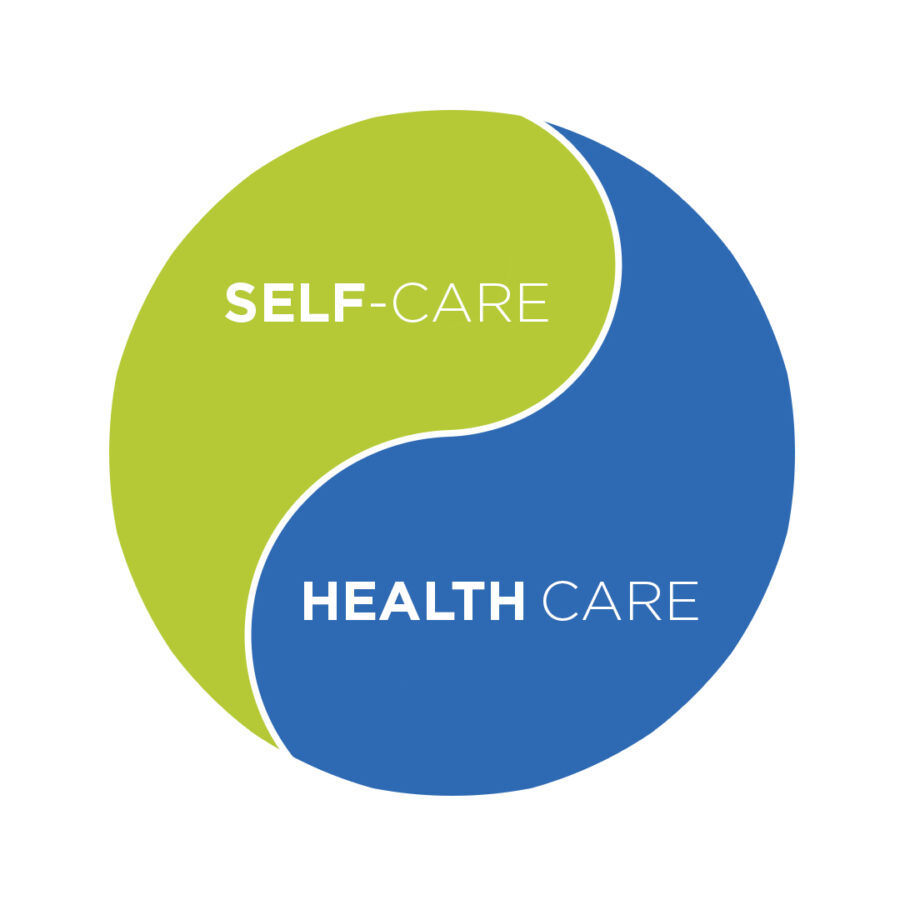
Trend #5
The Self-Care Renaissance
Where wellness and healthcare converge
By Cecelia Girr & Skyler Hubler
Introduction
From 1400–1700, the Medical Renaissance marked a historic breakthrough in our approach to healthcare. Science began to dominate superstition. Anatomical discoveries paved the way for modern medicine. And yes, vaccines were in development.
Over three hundred years later, we’re undergoing a new kind of medical renaissance, one where two complementary yet often competing entities—healthcare and wellness—will converge. As with any great renaissance, this new era will bring enlightenment, prolific thinkers, and a focus on art and design. Rather than looking backward to move forward, however, this renaissance will be born from healthcare and wellness looking side-to-side to learn from one another.
It’s worth noting that attempts to merge healthcare and wellness have been made in the past but were largely unsuccessful. Dr. Kenneth R. Pelletier, clinical professor of medicine and best-selling author, points to the fierce turf wars between conventional medicine and wellness—which has often been considered complementary or alternative medicine—as a major roadblock. “There’s an inherent tension between the money and the patients that are going to occupy this space,” he says.
But all signs—signs uncharacteristically optimistic for our current COVID-era—point to things being different this time around. The pandemic has forced health up the agenda for governments, businesses and individuals alike. And in tandem, we’re becoming acutely aware that it’s better to stay well than to wait for illness to strike. In terms of the two systems working together, Dr. Pelletier is confident that it’s coming. “If you look three to five years down the road, it’s inevitable that there will be a much more seamless exchange between healthcare and wellness, where there’s mutual respect and wider acceptance based on evidence rather than bias.”
In this new era, healthcare and wellness will learn to get along. Hospitals will take inspiration from five-star resorts, yoga studios might measure improved telomere length, and prescriptions may be coupled with hyper-personalized guides to optimal health. Years from now, we might just look back and realize that this was the Golden Age.
How We Got Here
The road where healthcare and wellness meet was not built overnight. Historians point to several factors that led to the Medical Renaissance following the Middle Ages—increased interaction between cultures, the rediscovery of ancient texts, innovation, and the impacts of conflict and death. The causes for our modern renaissance look eerily similar.
Interaction between cultures
This time around, the clash of cultures is happening between conventional healthcare and less conventional wellness. After all, it was the antiquated healthcare industry that opened the door for wellness to become the cool kid on the block. When healthcare gave us lab coats and sterile waiting rooms, wellness offered spiritual healers and therapeutic retreats. Up until now, the two had danced in each other’s worlds, sometimes crossing over but never successfully syncing up.
Ancient rediscoveries
Ancient remedies are also making a modern comeback. Wellness brilliantly rebranded the fundamentals—sleep, nature, movement, mindfulness, healthy eating—and turned them into a $4.5 trillion dollar industry.1 Even the most basic exercise of all, breathing, is gaining new attention. James Nestor, New York Times best-selling author and 2020 Global Wellness Summit speaker, brings the unconscious act top-of-mind in his latest book Breath: The New Science of a Lost Art.2 Through an exploration of both ancient breathing practices and recent cutting-edge research, Nestor explains how better breathing can lead to significant strides in personal health. Turns out the secret to being well isn’t a secret at all. The secrets have just been buried by an onslaught of 21st-century stressors.
Innovation
The pandemic is pushing the boundaries of innovation to new heights. Just as Renaissance thinkers are still celebrated for challenging the status quo, today’s most divergent health and wellness thinkers will go down in history. Just look at the Fauci fandom that’s already exploding in the US. The unlikely 79-year-old celeb has inspired merch, memes, online movements (#FauciFanClub), and even become the face of prayer candles.3 In parallel, advancements in biometrics and epigenetics are revolutionizing personalized care. Health is suddenly something to get excited about.
Conflict and death
Nothing says urgent like 1.71 million dead and counting. The pandemic has proven that science, medicine, and PhDs are essential, accelerating a mutual awakening of both camps. Wellness enthusiasts have been brutally reminded that yoga and essential oils won’t cure COVID-19, while those who solely relied on healthcare to cure their ailments have been forced to get real about the importance of preventative care (or “self-care” as it’s been affectionately renamed in some circles).
The French word “renaissance” means rebirth, or to wake up. And that, indeed, is what’s happening. We’re waking up to the fact that healthcare and wellness need each other, and consumer demands are forcing them to coexist peacefully. Wellness is learning to lean into science, establish standards, and hold itself accountable. At the same time, healthcare is beginning to borrow from the wellness playbook—transforming a once sterile and strictly curative industry into a more holistic, lifestyle-oriented, and even pleasurable one.
Wellness with a Capital ‘W’
Unbeknownst to the masses, many wellness practices have already received science’s stamp of approval. In fact, the Global Wellness Institute’s Wellness Evidence portal4 hosts compelling research backing 31 of the most popular therapies—from Ayurveda to optimism. But while researchers work behind-the-scenes, much sexier headlines around This Smells Like My Vagina candles and crystal-encrusted everything have at times given wellness a bad rap as supplemental and superficial. In the wake of the pandemic, however, that’s all changing. The world is waking up to the need for wellness, and it’s only a matter of time before institutional support follows suit. Promising signs of governments, doctors and medicine giving wellness wings for widespread adoption are already emerging.
With health concerns on high, governments are waging wellness at scale. Their intervention is not only giving wellness a financial boost but also furthering a worldwide culture of self-care. New Zealand’s Prime Minister Jacinda Ardern established the first-ever “wellbeing budget” in 20195—marking an unprecedented emphasis on citizen happiness over capitalist gain. Over in Singapore, the government is teaming up with the world’s biggest tech giant to create a healthier society. Through the LumiHealth app and Apple Watch, Singaporeans can participate in country-wide wellness challenges and access personalized health programs until 2022.6 Mindfulness tips, monetary incentives, and a friendly intergalactic explorer as your guide are just icing on the keto-friendly, gluten-free cake. But these initiatives are only the beginning. As evidence builds and enlightenment spreads across the globe, collective wellbeing is set to move further up the political agenda.
 Doctor’s orders are another key ingredient to wellness’s success. Suggestions to “eat well” are typically easier said than done—just look at the price tag on organic produce. Thankfully, there’s a growing wave of doctors working to change that. In the Boston-area, cardiologists are returning to the roots of nutrition through a federal program called Varanda (Veterans Administration Repurposing Agriculture for Nutrition and Diet Awareness), which prescribes produce from fruit and vegetable gardens—or “farmacys”—at veterans hospitals. In the same vein, restaurants like Just Be Kitchen in Denver are offering medically approved immunity-boosting meal bundles, while major apps like Noom are championing the idea that individuals can manage diabetes and hypertension through diet. The “food as medicine” approach is well-primed to take a juicy bite out of Big Pharma.
Doctor’s orders are another key ingredient to wellness’s success. Suggestions to “eat well” are typically easier said than done—just look at the price tag on organic produce. Thankfully, there’s a growing wave of doctors working to change that. In the Boston-area, cardiologists are returning to the roots of nutrition through a federal program called Varanda (Veterans Administration Repurposing Agriculture for Nutrition and Diet Awareness), which prescribes produce from fruit and vegetable gardens—or “farmacys”—at veterans hospitals. In the same vein, restaurants like Just Be Kitchen in Denver are offering medically approved immunity-boosting meal bundles, while major apps like Noom are championing the idea that individuals can manage diabetes and hypertension through diet. The “food as medicine” approach is well-primed to take a juicy bite out of Big Pharma.
On the mental health front, alternative wellness-oriented approaches are making their way into mainstream medicine. Five or so years ago, we might have gasped at the idea of grandma taking CBD gummies to get better sleep. Yet, according to JAMA, the number of American seniors over age 65 who smoke marijuana or use edibles has increased two-fold between 2015 and 2018.7 And the trend is set to continue globally, with the UN recently voting to remove medical marijuana from a category of the world’s most dangerous drugs.8 Psychedelics are on their way to medically championed stardom as well. Melbourne-based charity Mind Medicine Australia is just one group working to tackle depression, anxiety and PTSD through psychedelic-assisted therapy.9 With the mental health fallout looming, institutions are revisiting the merits of previously taboo treatments.
The Healthcare Rebrand
On the other end of the spectrum, we’re seeing healthcare take cues from the more pleasurable parts of wellness. Healthcare’s shortcomings have long been belabored, so we’ll keep it short and sweet. Red tape, expensive copays, long wait times, and hospitals that make you sicker top the list—not to mention the fact that if you bring up healthcare at a dinner party, you probably won’t be invited back. But in the Self-Care Renaissance, disruptive thinkers are dreaming up a future where healthcare is embraced rather than dreaded.
Let’s take everyone’s least favorite semi-annual appointment—the dentist. Dental health suffers across the globe, even in leading economies like the US, UK and Germany. You can blame it on limited access to dental care and high treatment costs—two very valid reasons—but it turns out that fear is a major factor as well. According to a recent worldwide study from DentaVox, 61% of people suffer from dental fear.10 But dental anxiety is nothing a wellness redesign can’t fix. New York start-ups Tend and Dntl Bar11 are two players rebranding dentist visits as a self-care experience. Think seasonal toothpaste flavors, Beats headphones to drown out the sound of plaque scrapers, massage chairs in the lobby, and yes—your favorite Netflix show streaming on the ceiling.
A similar trend is emerging on the hospital front. The days of stark-white, drab hospital design are coming to a close as medical establishments begin to strive for a more luxe look and feel. In the Netherlands, the Domstate Zorghotel rehabilitation center is adorned with refreshing splashes of color, thoughtfully-placed plants, and a grand piano. The Dutch studio that designed it—Van Eijk & Van der Lubbe—points out that “From small interior accessories to large spatial gestures, everything is focused on the process of healing.”12 And in Thailand, 15 hospitals under the Thonburi Healthcare Group are joining forces with hoteliers in an effort to capitalize on the booming wellness tourism market.13
While some healthcare players are giving physical spaces a millennial-friendly makeover, others are eliminating the need to leave your house altogether. Coronavirus is accelerating the rise of at-home care, empowering individuals to keep up with their health status on their own terms. And what better topic to handle in private than the “down-there” issues we avoid bringing up to our doctor at all costs? Take Juno Bio, a $149 home test kit that helps women better understand their vaginal microbiome. After sending a swab in for analysis, women can book a one-on-one call with a vaginal coach to discuss their data. Similar developments are taking place in men’s wellness. Misters is a “men’s confidence company” in India that’s providing personalized solutions for touchy male subjects like premature ejaculation and hair loss. Their AI-driven platform provides therapy through the privacy of a smartphone, so there’s no fear of being judged—something that’s especially important in a country where sex wellness still carries a stigma.
The long-overdue healthcare rebrand is here, and it’s being driven by a wave of shiny new start-ups and young, wellness-aware doctors. As German physicist Max Planck famously laid out, “Science advances one funeral at a time.” But let’s not wait for the funeral. Traditional healthcare players have a massive opportunity to join the revolution before they’re stomped out by it. After all, their audience has never been bigger or more engaged.
A New Duality
 As we look to a future where healthcare and wellness converge, there’s no better visual representation than Octave’s Sangha Retreat in Suzhou, China. Frederick Chavalit Tsao built the expansive resort with the vision of creating a utopia “where ancient healing modalities and modern medicine come together in the name of human optimization.”14 On the property, there’s a corridor that runs from one side to the other. One end is home to conventional medicine, and the other hosts wellness practices ranging from acupuncture to more “out-there” devices that measure the age of your soul. Visitors are free to flow between the two sides based on their needs.
As we look to a future where healthcare and wellness converge, there’s no better visual representation than Octave’s Sangha Retreat in Suzhou, China. Frederick Chavalit Tsao built the expansive resort with the vision of creating a utopia “where ancient healing modalities and modern medicine come together in the name of human optimization.”14 On the property, there’s a corridor that runs from one side to the other. One end is home to conventional medicine, and the other hosts wellness practices ranging from acupuncture to more “out-there” devices that measure the age of your soul. Visitors are free to flow between the two sides based on their needs.
The corridor at the Sangha Retreat presents a perfect image of what we believe is next for healthcare and wellness. A kind of yin yang approach where two seemingly opposing forces finally discover that they can—and must—work together. As Dr. Pelletier puts it, “Medicine is realizing that its roots have come from wellness traditions, and the wellness community is recognizing that not all doctors are evil.”
The truth is, hospitals, prescriptions and doctors aren’t going away any time soon. If anything, COVID has only solidified their importance. But by emphasizing self-care, we can all decrease our dependence on the parts of healthcare we’re trying to avoid anyhow. It starts by taking deliberate actions to care for our mental and physical health. And while it’s ultimately up to us, healthcare and wellness both have a vital role to play in unlocking access, empowering us to make smarter choices, and maybe even making it feel good along the way.
Endnotes
1 “Wellness Industry Statistics and Facts,” Global Wellness Institute, 2018.
2 Terry Gross, “How The ‘Lost Art’ Of Breathing Can Impact Sleep And Resilience,” NPR, May 27, 2020.
3 Terry Nguyen, “How Anthony Fauci became the face of the pandemic — and its merch,” Vox, May 18, 2020.
4 “Wellness Evidence,” The Global Wellness Institute.
5 Sigal Samuel, “Forget GDP — New Zealand is prioritizing gross national well-being,” Vox, June 8, 2019.
6 “Singapore and Apple partner on national health initiative using Apple Watch,” Apple Press Release, September 15, 2020.
7 Benjamin H. Han, MD, MPH, Joseph J. Palamar, PhD, MPH, “Trends in Cannabis Use Among Older Adults in the United States 2015-2018,” JAMA, February 24, 2020.
8 Isabella Kwai, “U.N. Reclassifies Cannabis as a Less Dangerous Drug,” New York Times, December 2, 2020.
9 Stephanie Holloway, “Mind Medicine Australia: Could Psychedelics Solve Our Mental Health Crisis?,” Hive Life, August 12, 2020.
10 “Study finds more than 60 percent of people suffer from dental fear,” DentaVox, September 13, 2018.
11 Marisa Dellato, “These Instagram-friendly dentist offices are a millennial’s dream,” New York Post, January 21, 2020.
12 India Block, “Van Eijk & Van der Lubbe designs Utrecht care facility like a boutique hotel,” Dezeen, November 8, 2020.
13 Lamonphet Apisitniran, Dusida Worrachaddejchai, and Kanana Katharangsiporn, “Hospitals and hotels grab onto panacea,” Bankok Post, December 14, 2020.
14 Coco Marett, “Sangha Retreat By Octave Is The Wellness Centre Of The Future,” Hong Kong Tatler, January 10, 2020.
Download this 2021 trend and receive the 2021 mid-year update as well. The 2022 Future of Wellness global trends report is now available. View the latest trends. Subscribe to our mailing list and receive the bi-weekly TRENDium, a compendium of the trends impacting the multi-trillion dollar global wellness economy featuring the latest news and insights. Sign-up to receive the TRENDium.
